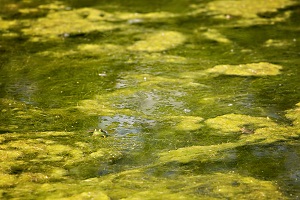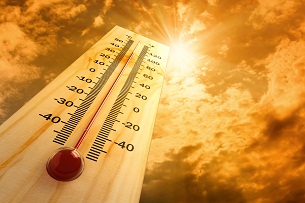
Mold lives on three things: water, organic matter, and heat. When the right moisture content combines with an ideal temperature around sheetrock, paper, or fabric, it creates mold growth. When these conditions persist over time, the mold spreads and evolves, often causing health issues. Take the time to learn the optimal growing conditions for mold so you can keep yourself, and your family, safe.
Water
Standing water is a perfect environment for mold growth. Algae is common in swimming pools, lakes, and ponds. Yet, because water exists in more than one state, it becomes a stealthy part of the recipe for mold in buildings.
Moisture control is key to preventing mold from growing in your home.
- Air Temperature
Depending on where you live, climate control can be a real challenge. If you live in a hot, dry area, your strategy for minimizing moisture will be different than if your landscape is extremely humid. Work with a trained HVAC technician to determine your home’s ideal moisture level to prevent mold from growing.
- Proper Ventilation
Standing moisture is an ideal setting for the evolution of mold spores. This is often an issue in bathrooms and other water-heavy areas. The moisture needs somewhere to go and a way to exit your home. You may need to install either a humidifier or a dehumidifier to keep the moisture from becoming excessive.
Organic Food Matter

Heat
Heat is the most predictable of the three conditions that work in combination to grow mold. Mold generally doesn’t grow in consistently cold environments. However, if you’re located in a climate that is hot and humid at least part of the year, you may already have mold present in your home.
The ideal temperature for mold growth is at least 70-degrees Fahrenheit or 20-degrees Celsius. If you’re in a region that’s warm year-round, it’s essential you hire a trained, certified HVAC worker to install an air-conditioning unit in your home. This is the first step to controlling mold growth and its ability to spread throughout your house.
Call a trained HVAC technician from a reputable company today. Have them do a thorough sweep of your home, both the interior and exterior, to determine your current mold profile: varieties, quantities, and toxicity. They’ll create a plan to minimize the rate of growth and keep your family safe.




Leave a Reply